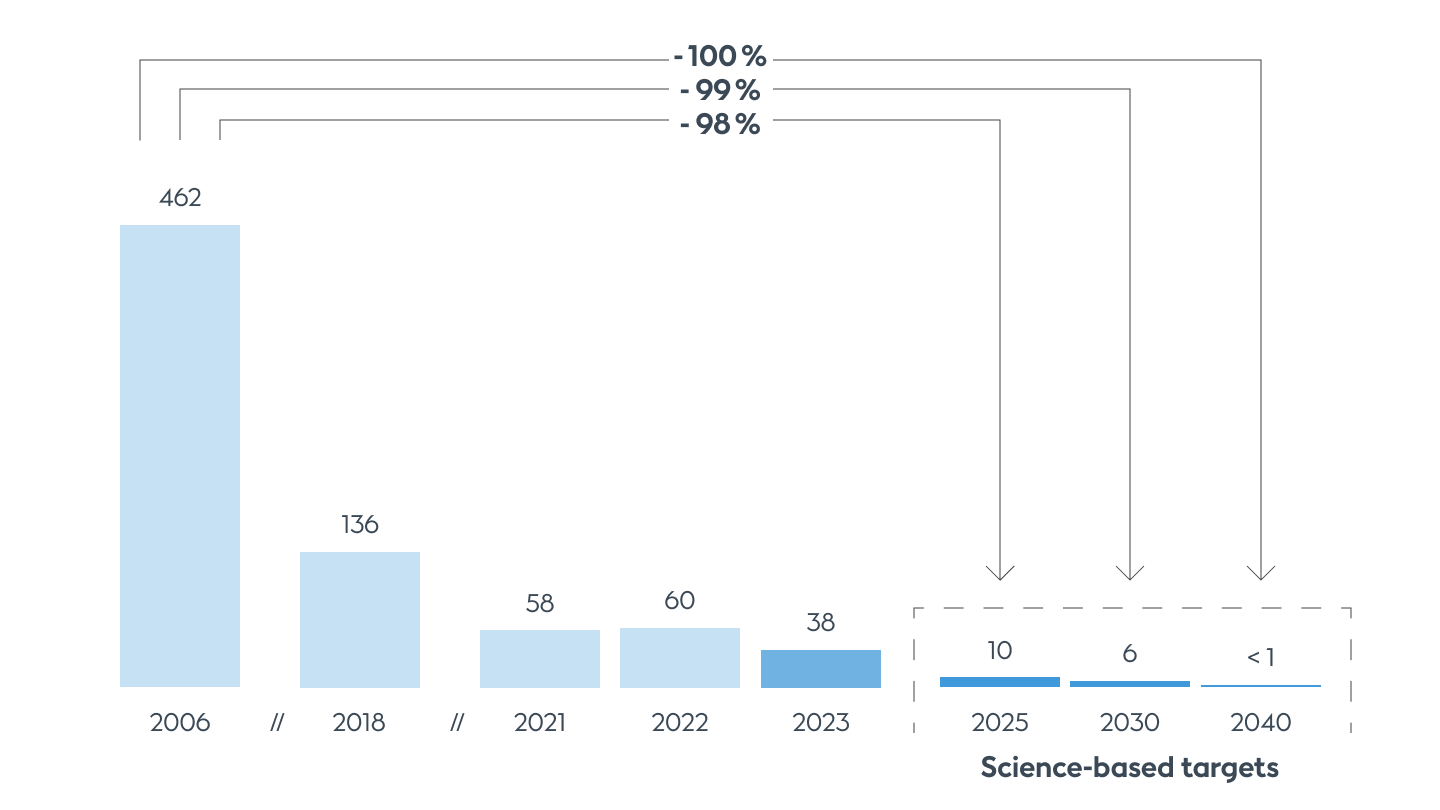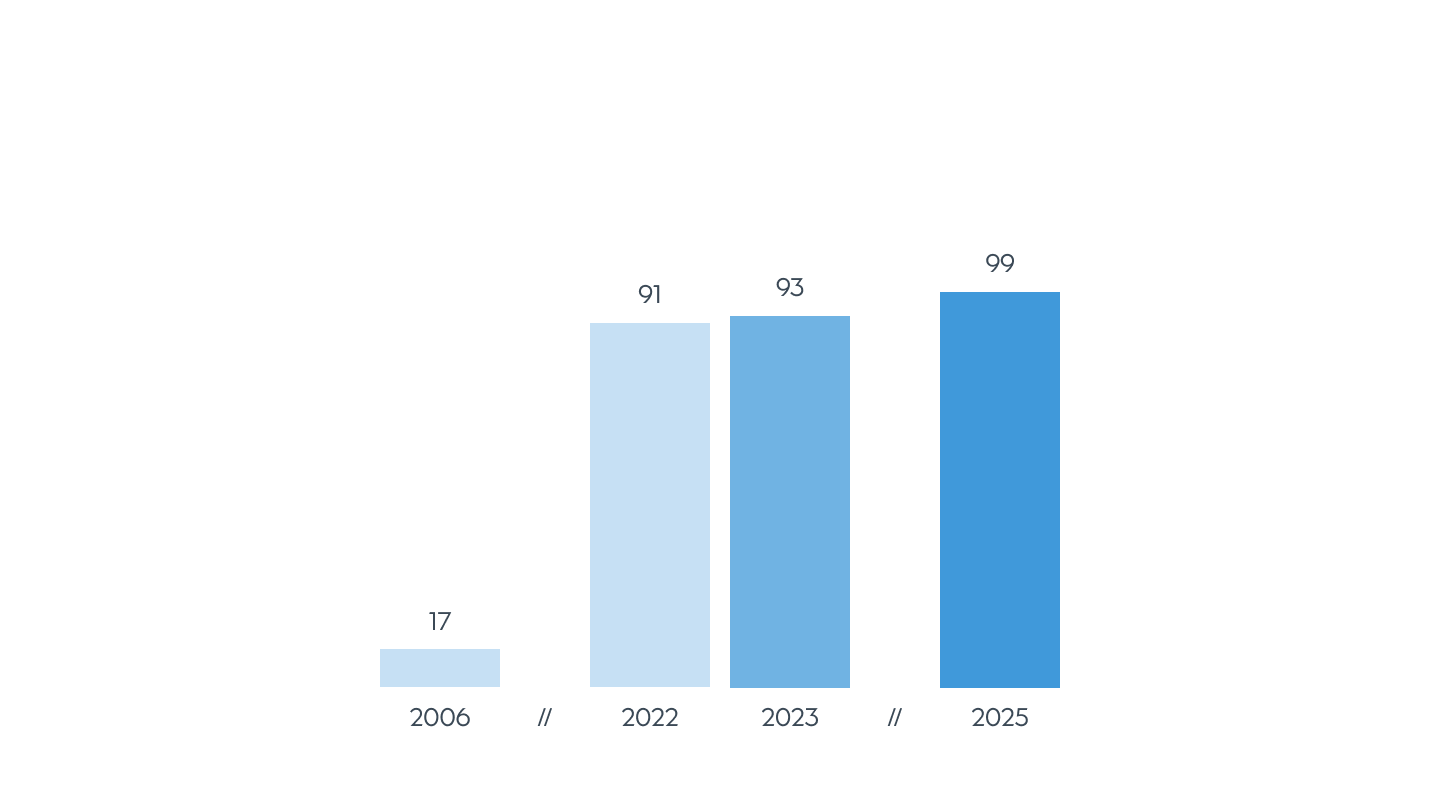To deliver on our sustainability goals, we need to tackle the carbon emissions tied to our own energy generation and operations. We’ve already made significant progress and continue to work towards targets based on climate science.
Why are we reducing our emissions across our entire business?
Our vision at Ørsted is a world that runs entirely on green energy, and we aspire to be one of the leading catalysts for the transition. That starts with decarbonising our own energy generation and operations (scope 1-2).
“
We have the most progressive decarbonisation targets in the energy sector, and we want to reduce our scope 1-2 emissions intensity by 98 % by 2025.
What are we doing?
- We’ve aligned our emissions reduction targets with the available climate science, as validated by the Science Based Target initiative (SBTi).
- With our science-based 2025 target, we’ve committed to reducing the emissions intensity in our energy generation and operations by at least 98 % from 2006 to 2025. This covers emissions from the generation of heat and power as well as our operations, including vessels, vehicles, and sites (scope 1-2).
- We are on track to phase out coal-based energy generation by 2025, with our last use of coal planned for August 2024.
How are we doing?
We’ve come a long way in reducing our emissions and increasing the green share of our energy generation.
Latest updates from 2023
- We began building carbon capture and storage facilities at our biomass-fired Asnæs and Avedøre power stations. This is Denmark’s first full-scale carbon capture project.
- We allocated 99 % of our capital expenditure (CAPEX) to environmentally sustainable investments aligned with the EU taxonomy. For more information, see our annual report 2023.
- We signed a second contract with ESVAGT for a methanol-powered service operation vessel, a milestone in our efforts to decarbonise offshore wind operations.
- We no longer acquire, or lease, vehicles powered by fossil fuels, and 57 % of our vehicle fleet is now electric, an increase from 51 % in 2022.
- As part of our nature-based carbon removal portfolio, we planted around 40 million propagules in Gambia, equivalent to around 4,000 hectares, contributing to the restoration of vital ecosystems and mitigating climate change.
What’s next?
We’ll continue driving out emissions across scopes 1 and 2. The aim is to reduce our emissions intensity as much as possible, even beyond our 98 % reduction target.
Key information
Partnerships
Our decarbonisation efforts are guided by collaboration with world-leading climate NGOs:
- Science Based Targets initiative
- EV100, the Climate Group
- Energy Transitions Commission
- We Mean Business Coalition
International frameworks
Our climate strategy builds on global best practice standards and the 1.5 °C pathway, as outlined by climate science:
- The Paris Agreement
- Science Based Targets initiative: Corporate Net-Zero Standard
- Greenhouse Gas Protocol
- IPCC Sixth Assessment Report
- CDP climate change questionnaire
Governance
Accountability lies with our Chief Operating Officer and heads of regions.These efforts contribute towards the following Sustainable Development Goal:


